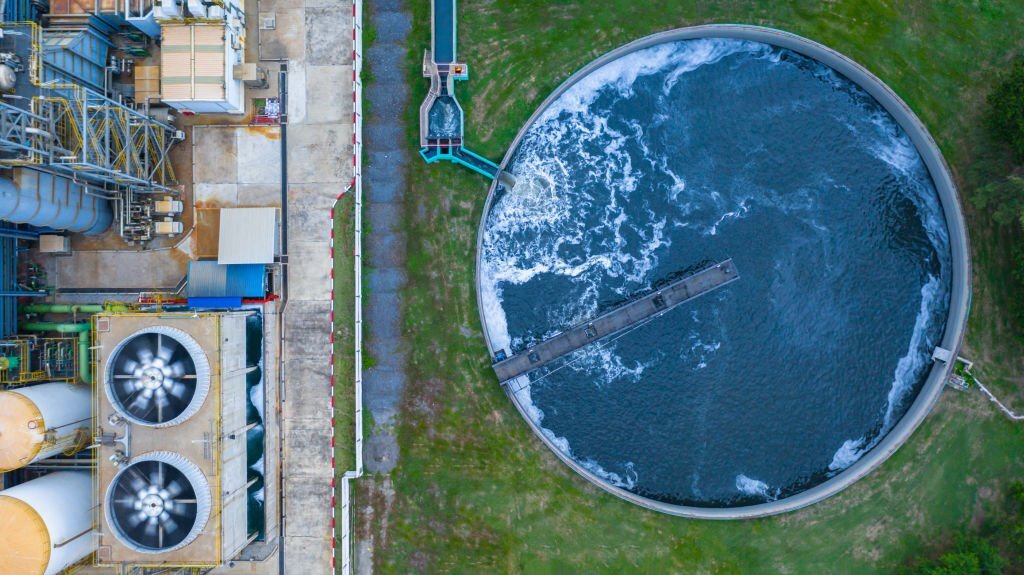The Role of Energy Recovery in Transforming Wastewater Treatment
Wastewater treatment is no longer seen as a process limited to purifying water. With the global shift toward sustainable development...

Wastewater treatment is no longer seen as a process limited to purifying water. With the global shift toward sustainable development and energy efficiency, wastewater treatment plants are evolving into energy-producing facilities. One of the most exciting innovations driving this transformation is energy recovery. Through the integration of advanced technologies, energy embedded in wastewater is being harnessed to power operations and reduce dependence on external energy sources.
This blog explores how energy recovery is reshaping the wastewater treatment industry, the technologies enabling it, and the long-term benefits of adopting energy-positive systems.
Why Energy Recovery Matters in Wastewater Treatment
Traditionally, wastewater treatment plants are among the highest energy consumers in the municipal infrastructure system. On average, energy costs can account for up to 40% of a plant’s operational budget. Most of this energy is used for aeration, pumping, and sludge management.
However, wastewater contains a significant amount of organic matter, heat, and chemical energy that can be recovered and reused. By integrating energy recovery technologies, treatment facilities can become self-sustaining or even net energy producers—reducing costs, lowering carbon footprints, and promoting a circular economy.
Key Technologies Enabling Energy Recovery
There are several cutting-edge technologies being used today to recover energy from wastewater. Each plays a role in turning waste into a valuable resource:
1. Anaerobic Digestion (AD)
Anaerobic digestion is one of the most widely used energy recovery methods in wastewater treatment. It involves breaking down organic matter in the absence of oxygen. This process generates biogas, primarily composed of methane (CH₄) and carbon dioxide (CO₂), which can be used as a renewable fuel.
Applications of biogas:
- Onsite electricity and heat generation via combined heat and power (CHP) systems
- Upgraded to biomethane for grid injection or transportation fuel
- Sold to local utilities for revenue generation
2. Thermal Hydrolysis
Thermal hydrolysis is used as a pre-treatment to anaerobic digestion. It uses high temperatures and pressure to break down complex organics in sewage sludge, making them more digestible by bacteria. This enhances biogas production and reduces sludge volume, making the entire process more energy-efficient.
3. Heat Recovery Systems
Treated wastewater (effluent) retains heat energy. By using heat exchangers, this low-grade thermal energy can be recovered and reused to:
- Preheat incoming wastewater
- Heat buildings and process tanks
- Support district heating systems
In colder climates or urban areas with centralized heating networks, this application can be particularly beneficial.
4. Microbial Fuel Cells (MFCs)
An emerging technology, microbial fuel cells use bacteria to convert the chemical energy in organic matter directly into electricity. While still in early stages of commercialization, MFCs show promise for decentralized, small-scale wastewater treatment systems.
5. Nutrient Recovery
While not a direct energy recovery method, nutrient recovery from sludge contributes to resource efficiency. By extracting nitrogen and phosphorus from biosolids, wastewater plants can create fertilizers, reducing the energy-intensive need for synthetic alternatives.
Benefits of Energy Recovery in Wastewater Treatment
Integrating energy recovery into wastewater systems brings a range of environmental, economic, and operational benefits:
Reduced Energy Costs
With the ability to generate electricity and thermal energy onsite, facilities can offset up to 100% of their energy needs in some cases, leading to substantial cost savings over time.
Lower Greenhouse Gas Emissions
By relying on renewable energy generated from waste, treatment plants can drastically cut their carbon emissions and contribute to national and global climate targets.
Improved Operational Efficiency
Technologies like thermal hydrolysis and anaerobic digestion streamline sludge management and improve process stability, resulting in fewer breakdowns and better treatment performance.
Circular Economy Integration
By recovering energy and nutrients, treatment plants close the loop in the waste cycle, turning wastewater from a liability into an asset.
Enhanced Energy Security
Producing energy onsite reduces dependency on external electricity grids and protects facilities from power outages or rising energy costs.
Global and Indian Trends
Around the world, many advanced economies are embracing energy-positive wastewater treatment. For instance, Denmark aims to make all its wastewater plants energy-neutral by 2030. In Germany and the Netherlands, many plants already produce more energy than they consume.
In India, the concept of energy recovery in wastewater treatment is gaining traction, especially in urban and industrial zones. With the rising focus on sustainability and smart infrastructure, forward-thinking companies like Cleantech Water are helping implement energy-efficient wastewater systems that not only clean water but also reduce operational energy consumption.
Challenges in Implementation
While the benefits are significant, there are certain challenges to adopting energy recovery in wastewater treatment:
- High Initial Investment: Setting up biogas recovery, CHP systems, or thermal hydrolysis requires capital investment.
- Skilled Workforce: Advanced systems require trained operators and maintenance staff.
- Regulatory Frameworks: Policies related to biogas use, nutrient reuse, and grid interconnection can vary and may act as barriers.
- Space Constraints: Older plants may not have sufficient space to retrofit energy recovery technologies.
However, with the right planning, government incentives, and stakeholder involvement, these challenges can be effectively addressed.
The Future: Smart, Energy-Positive Wastewater Plants
The integration of IoT, automation, and AI in wastewater treatment is opening up new possibilities for energy optimization. In the near future, smart systems will be able to:
- Predict energy demands and biogas yields
- Auto-adjust processes for maximum efficiency
- Integrate with solar and wind energy systems
- Monitor emissions and compliance in real-time
This smart, data-driven approach will further push wastewater treatment plants toward energy positivity, enabling them to serve as clean energy hubs in cities and industrial zones.
Conclusion
Energy recovery is not just a sustainability trend—it’s a game-changing innovation in the wastewater treatment sector. With technologies like anaerobic digestion, thermal hydrolysis, and heat recovery, treatment plants can significantly cut energy costs, reduce emissions, and create value from waste.
By adopting energy recovery systems, the industry can transition from being a major energy consumer to a producer of clean, renewable energy. In India, solution providers like Cleantech Water are playing a pivotal role in making this transformation accessible, efficient, and impactful.
The future of wastewater treatment is not just about purifying water—it’s about powering the future.



